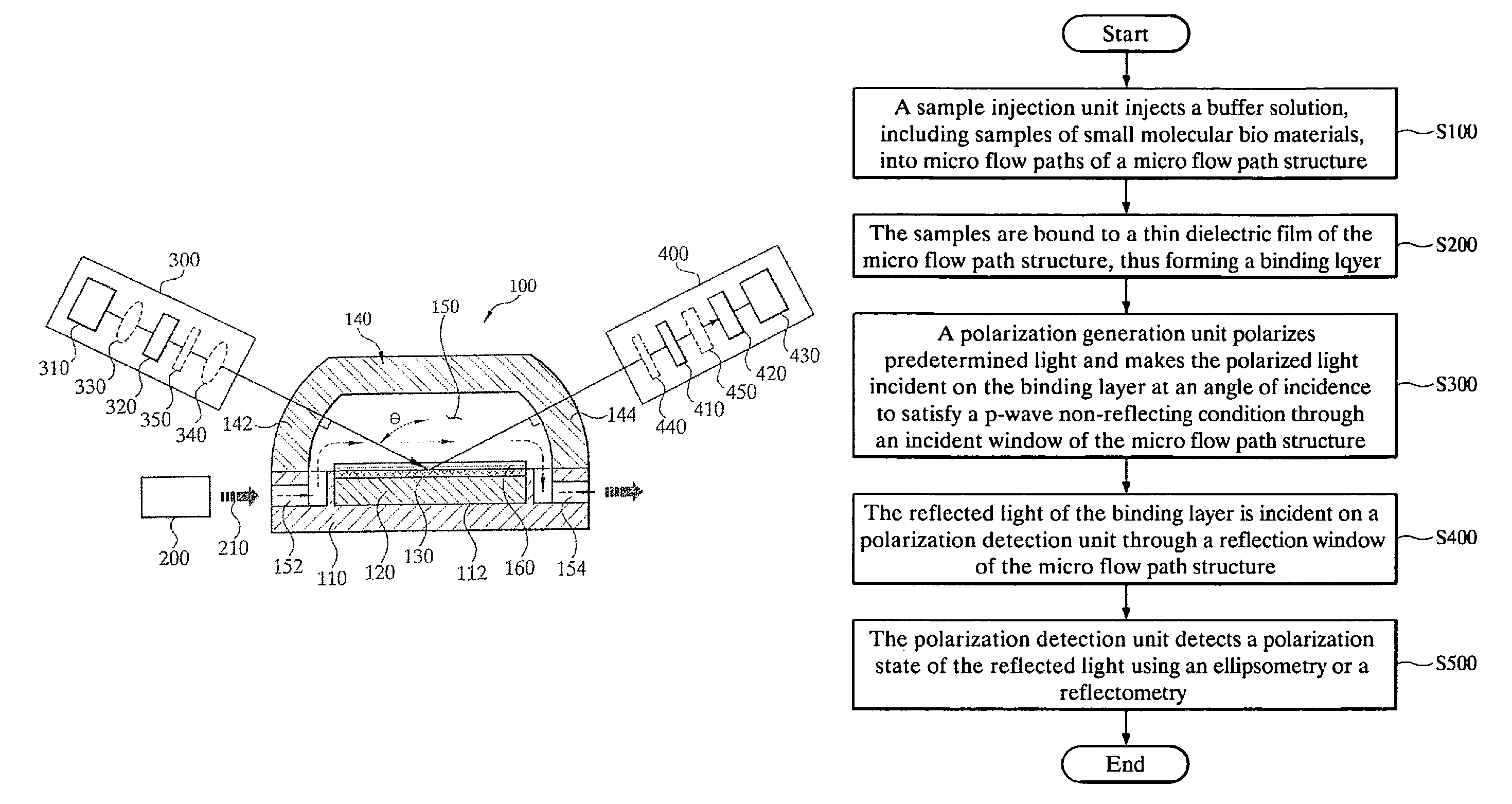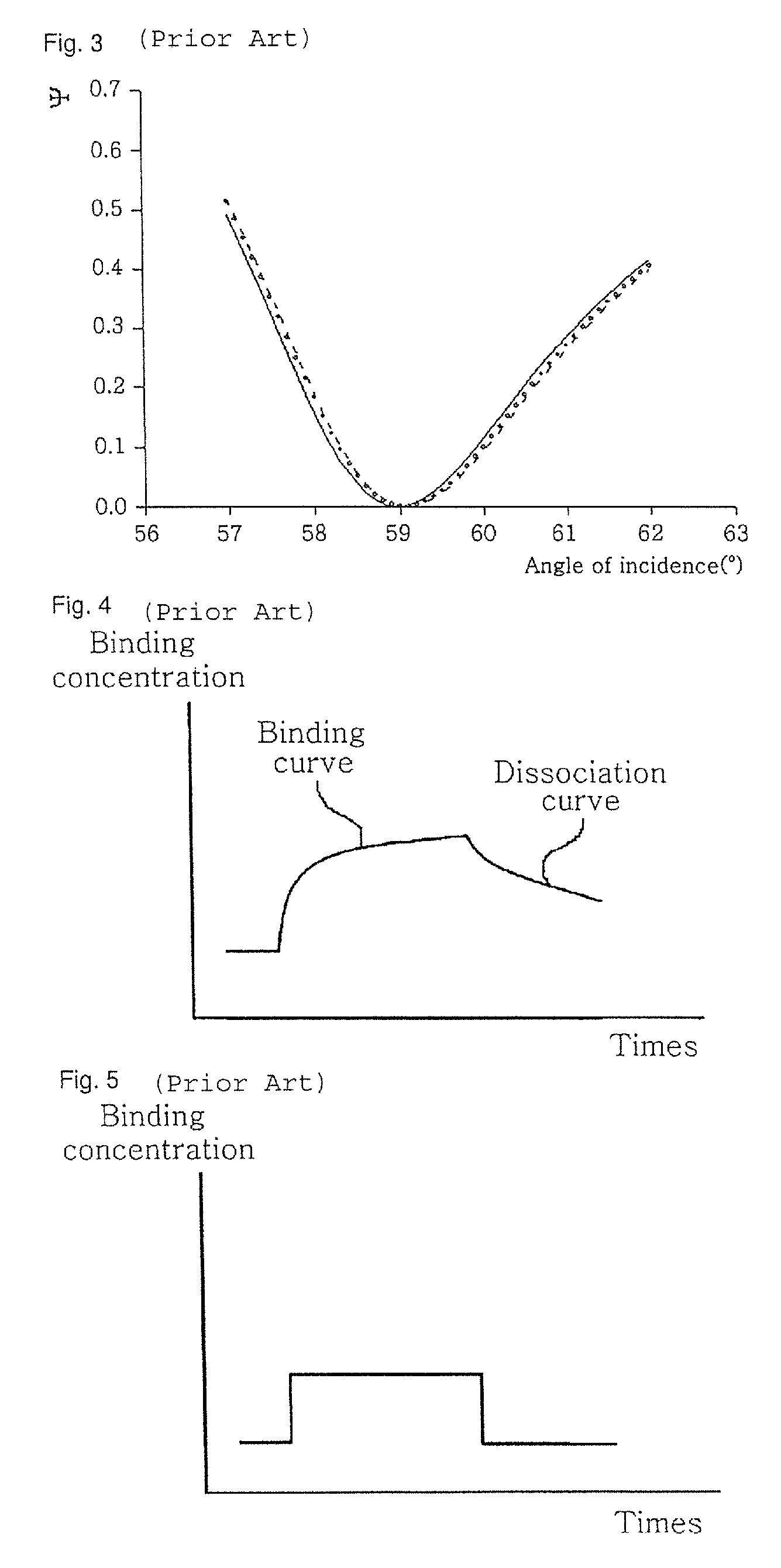Apparatus and method for quantifying binding and dissociation kinetics of molecular interactions
a molecular biomaterial and kinetics technology, applied in the field of apparatus and method for quantifying the binding and dissociation kinetics of molecular biomaterials, can solve the problems of low reliability, metal film b>20/b>, and the manufacturing cost of conventional spr sensors is high, so as to achieve accurate measurement, increase the signal-to-noise ratio, and reduce manufacturing costs. remarkably
- Summary
- Abstract
- Description
- Claims
- Application Information
AI Technical Summary
Benefits of technology
Problems solved by technology
Method used
Image
Examples
experiment examples
[0114]FIG. 13 is a graph showing a change in the ellipsometric constants and according to a change in the reflective index of the buffer solution in case where the thin dielectric film is formed of a silicon oxide film. In FIG. 13, the light source 310 had a wavelength of 532 nm, and a silicon oxide film of 2 nm in thickness was used as the thin dielectric film 130. From FIG. 13, it can be seen that an angle of incidence corresponding to a p-wave non-reflecting condition is around 72 at which the values of the ellipsometric constants Ψ and Δ are abruptly changed. It can also be seen that in case where the binding layer 160 is not formed (0 nm), there is almost no change in the values of the ellipsometric constants Ψ and Δ according to a change (1.333, 1.334) in the reflective index of the buffer solution 210. It means that only binding and dissociation kinetics inherent in samples can be measured because the thin dielectric film 130 providing a stable light characteristic is used.
[0...
PUM
| Property | Measurement | Unit |
|---|---|---|
| thickness | aaaaa | aaaaa |
| thickness | aaaaa | aaaaa |
| thickness | aaaaa | aaaaa |
Abstract
Description
Claims
Application Information
 Login to View More
Login to View More - R&D
- Intellectual Property
- Life Sciences
- Materials
- Tech Scout
- Unparalleled Data Quality
- Higher Quality Content
- 60% Fewer Hallucinations
Browse by: Latest US Patents, China's latest patents, Technical Efficacy Thesaurus, Application Domain, Technology Topic, Popular Technical Reports.
© 2025 PatSnap. All rights reserved.Legal|Privacy policy|Modern Slavery Act Transparency Statement|Sitemap|About US| Contact US: help@patsnap.com



